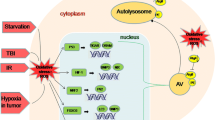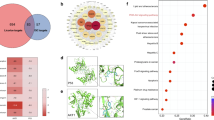Abstract
Sinomenine (SN), a purified alkaloid from Chinese herb Sinomenium acutum that was used preferentially in the treatment of rheumatoid diseases, has exerted neuroprotective effects and anti-inflammatory properties in many previous studies. Some studies have revealed that the antioxidant property of SN, acting mainly through inhibiting NADPH oxidase activation, was involved in the beneficial effects of SN. However, SN belongs to the family of dextrorotatory morphinan analogues, which may initiate elevation of reactive oxygen species (ROS) levels. Thus in the present report, we conducted studies to examine its impact and mechanism on the resistance of PC12 neuronal cells to oxidative stress. Precondition with SN (0.1–5 μM) for 12 h significantly decreased H2O2-induced cytotoxicity and remarkably alleviated oxidative injury. However, SN exhibited little direct free radical scavenging property in vitro and induced “appropriate” production of ROS in PC12 cell. Interestingly, the SN-triggering ROS production served as a signal to activate the Nrf2 antioxidant system including Nrf2, HO-1, and NQO-1, which was inhibited by the antioxidant trolox. Furthermore, Nrf2 knockdown largely attenuated the beneficial effects of SN precondition on oxidative stress. In conclusion, our findings suggested that SN increased the resistance to oxidative stress in neuronal cells via a ROS-dependent up-regulation of endogenous antioxidant system, and this mechanism may be involved in the neuroprotection of SN.







Similar content being viewed by others
References
Bao GH, Qin GW, Wang R, Tang XC (2005) Morphinane alkaloids with cell protective effects from Sinomenium acutum. J Nat Prod 68:1128–1130. doi:10.1021/np050112+
Buendia I, Michalska P, Navarro E, Gameiro I, Egea J, Leon R (2016) Nrf2-ARE pathway: An emerging target against oxidative stress and neuroinflammation in neurodegenerative diseases. Pharmacol Ther 157:84–104. doi:10.1016/j.pharmthera.2015.11.003
Carvalho AN, Firuzi O, Gama MJ, van Horssen J, Saso L (2016) Oxidative stress and antioxidants in neurological diseases: is there still hope? Current drug targets. doi:10.2174/1389450117666160401120514
Chen DP et al (2011) Anti-inflammatory activities of Chinese herbal medicine sinomenine and Liang Miao San on tumor necrosis factor-alpha-activated human fibroblast-like synoviocytes in rheumatoid arthritis. J Ethnopharmacol 137:457–468. doi:10.1016/j.jep.2011.05.048
Elyasi L, Eftekhar-Vaghefi SH, Esmaeili-Mahani S (2014) Morphine protects SH-SY5Y human neuroblastoma cells against 6-hydroxydopamine-induced cell damage: involvement of anti-oxidant, calcium blocking, and anti-apoptotic properties. Rejuvenation Res 17:255–263. doi:10.1089/rej.2013.1473
Espinosa-Diez C, Miguel V, Mennerich D, Kietzmann T, Sanchez-Perez P, Cadenas S, Lamas S (2015) Antioxidant responses and cellular adjustments to oxidative stress redox biology 6:183–197. doi:10.1016/j.redox.2015.07.008
Fan H et al (2015) Methionine sulfoxide reductase A negatively controls microglia-mediated neuroinflammation via inhibiting ROS/MAPKs/NF-kappaB signaling pathways through a catalytic antioxidant function. Antioxid Redox Signal 22:832–847. doi:10.1089/ars.2014.6022
Feng H, Yamaki K, Takano H, Inoue K, Yanagisawa R, Yoshino S (2006) Suppression of Th1 and Th2 immune responses in mice by Sinomenine, an alkaloid extracted from the chinese medicinal plant Sinomenium acutum. Planta Med 72:1383–1388. doi:10.1055/s-2006-951721
Fourquet S, Guerois R, Biard D, Toledano MB (2010) Activation of NRF2 by nitrosative agents and H2O2 involves KEAP1 disulfide formation. J Biol Chem 285:8463–8471. doi:10.1074/jbc.M109.051714
Hybertson BM, Gao B (2014) Role of the Nrf2 signaling system in health and disease. Clin Genet 86:447–452. doi:10.1111/cge.12474
Jin HZ, Wang XL, Wang HB, Wang YB, Lin LP, Ding J, Qin GW (2008) Morphinane alkaloid dimers from Sinomenium acutum. J Nat Prod 71:127–129. doi:10.1021/np0704654
Kim GH, Kim JE, Rhie SJ, Yoon S (2015) The role of oxidative stress in neurodegenerative diseases. Exp Neurobiol 24:325–340. doi:10.5607/en.2015.24.4.325
Li L, Gao XL, Ding BX (2008) Inhibitory effect of sinomenine on H2O2-induced apoptosis in neonatal rat cardiomyocytes. Zhongguo Zhong yao za zhi = Zhongguo zhongyao zazhi = China journal of Chinese materia medica 33(939–941):961
Li J, Zhao L, He X, Zeng YJ, Dai SS (2013) Sinomenine protects against lipopolysaccharide-induced acute lung injury in mice via adenosine A(2A) receptor signaling. PLoS ONE 8:e59257. doi:10.1371/journal.pone.0059257
Lin MT, Beal MF (2006) Mitochondrial dysfunction and oxidative stress in neurodegenerative diseases. Nature 443:787–795. doi:10.1038/nature05292
Liu ZQ, Chan K, Zhou H, Jiang ZH, Wong YF, Xu HX, Liu L (2005) The pharmacokinetics and tissue distribution of sinomenine in rats and its protein binding ability in vitro. Life Sci 77:3197–3209. doi:10.1016/j.lfs.2005.05.054
Long LH et al (2010) HPLC and LC-MS analysis of sinomenine and its application in pharmacokinetic studies in rats. Acta Pharmacol Sin 31:1508–1514. doi:10.1038/aps.2010.122
Ma J, Yuan X, Qu H, Zhang J, Wang D, Sun X, Zheng Q (2015) The role of reactive oxygen species in morphine addiction of SH-SY5Y cells. Life Sci 124:128–135. doi:10.1016/j.lfs.2015.01.003
Mark W et al (2003) Sinomenine blocks tissue remodeling in a rat model of chronic cardiac allograft rejection. Transplantation 75:940–945. doi:10.1097/01.TP.0000056610.22062.03
Popa-Wagner A, Mitran S, Sivanesan S, Chang E, Buga AM (2013) ROS and brain diseases: the good, the bad, and the ugly. Oxid Med Cell Longev 2013:963520. doi:10.1155/2013/963520
Qian L, Xu Z, Zhang W, Wilson B, Hong JS, Flood PM (2007) Sinomenine, a natural dextrorotatory morphinan analog, is anti-inflammatory and neuroprotective through inhibition of microglial NADPH oxidase. J neuroinflammation 4:23. doi:10.1186/1742-2094-4-23
Qin T, Du R, Huang F, Yin S, Yang J, Qin S, Cao W (2016a) Sinomenine activation of Nrf2 signaling prevents hyperactive inflammation and kidney injury in a mouse model of obstructive nephropathy. Free Radic Biol Med 92:90–99. doi:10.1016/j.freeradbiomed.2016.01.011
Qin T, Yin S, Yang J, Zhang Q, Liu Y, Huang F, Cao W (2016b) Sinomenine attenuates renal fibrosis through Nrf2-mediated inhibition of oxidative stress and TGFbeta signaling. Toxicol Appl Pharmacol 304:1–8. doi:10.1016/j.taap.2016.05.009
Schieber M, Chandel NS (2014) ROS function in redox signaling and oxidative stress. Curr Biol 24:R453–R462. doi:10.1016/j.cub.2014.03.034
Wang W et al (2016) Sinomenine attenuates Angiotensin II-induced autophagy via inhibition of P47-Phox translocation to the membrane and influences reactive oxygen species generation in podocytes. Kidney Blood Press Res 41:158–167. doi:10.1159/000443417
Wu WN et al (2011) Sinomenine protects against ischaemic brain injury: involvement of co-inhibition of acid-sensing ion channel 1a and L-type calcium channels. Br J Pharmacol 164:1445–1459. doi:10.1111/j.1476-5381.2011.01487.x
Xu M, Liu L, Qi C, Deng B, Cai X (2008) Sinomenine versus NSAIDs for the treatment of rheumatoid arthritis: a systematic review and meta-analysis. Planta Med 74:1423–1429. doi:10.1055/s-2008-1081346
Yang Z, Liu Y, Yuan F, Li Z, Huang S, Shen H, Yuan B (2014) Sinomenine inhibits microglia activation and attenuates brain injury in intracerebral hemorrhage. Mol Immunol 60:109–114. doi:10.1016/j.molimm.2014.03.005
Zhang Y, Du Y, Le W, Wang K, Kieffer N, Zhang J (2011) Redox control of the survival of healthy and diseased cells. Antioxid Redox Signal 15:2867–2908. doi:10.1089/ars.2010.3685
Acknowledgement
This work was supported by the National Nature Science Foundation of China (Grant Nos. U1504808 and 81501075).
Author Contributions
Hua Fan, Qing Shu, and Juan Li conceived and designed the experiments; Xinlei Guan, Jiegang Zhao, Junqiang Yan, Xiangming Li, Jiangbo Liu, Zhaohui Jia, and Jian Shi performed the experiments; Xinlei Guan and Qing Shu analyzed the data; Hua Fan and Juan Li wrote the paper.
Author information
Authors and Affiliations
Corresponding authors
Ethics declarations
Conflicts of interest
The authors declare that they have no conflict of interest.
Ethical approval
This article does not contain any studies with human participants or animals performed by any of the authors.
Informed consent
Informed consent was obtained from all individual participants included in the study.
Additional information
Hua Fan, Qing Shu and Xinlei Guan have contributed equally to this work.
Rights and permissions
About this article
Cite this article
Fan, H., Shu, Q., Guan, X. et al. Sinomenine Protects PC12 Neuronal Cells against H2O2-induced Cytotoxicity and Oxidative Stress via a ROS-dependent Up-regulation of Endogenous Antioxidant System. Cell Mol Neurobiol 37, 1387–1398 (2017). https://doi.org/10.1007/s10571-017-0469-1
Received:
Accepted:
Published:
Issue Date:
DOI: https://doi.org/10.1007/s10571-017-0469-1




